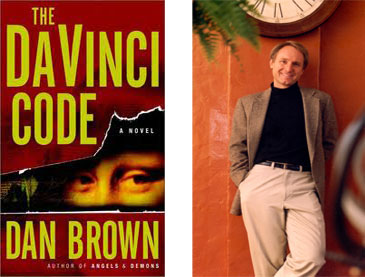Looking for a fantasy read that’s great for the classroom this fall? One stellar recommendation is The Copernicus Legacy: The Forbidden Stone by bestselling author Tony Abbott – now in paperback!

A perfect pick for kids who love Percy Jackson, Kingdom Keepers, or Seven Wonders series, The Copernicus Legacy is a Da Vinci Code-style story for young readers. The book follows four kids who stumble upon a powerful ancient secret of the famous astronomer, Nicolaus Copernicus. Protected by notables throughout history, it now falls to our young heroes to become guardians of Copernicus’s secret, racing across the globe, cracking codes, and unraveling centuries-old mysteries in order to prevent it from falling into the hands of a vast and evil shadow network called the New Teutonic Order.
It’s the worldwide adventure and historical scope that makes the series both page turning and educational, earning it many great reviews including a starred review from Kirkus: “With engaging characters, a globe-trotting plot and dangerous villains, it is hard to find something not to like. Equal parts edge-of-your-seat suspense and heartfelt coming-of-age.”
There’s even a downloadable Common Core-aligned activities guide and star map poster so you can bring the adventure into the classroom.
Veteran children’s book author Tony Abbott is no stranger to epic adventure series having written over a hundred books including The Secrets of Droon. The Copernicus Legacy will include six full-length novels and six shorter novellas, each told from the perspective of one of the kids. The first novella, The Copernicus Archives #1: Wade and the Scorpion’s Claw, is available now and the next full-length novel, The Copernicus Legacy #2: The Serpent’s Curse, will be out on October 7.

To celebrate the launch of the next books in this exciting series, on Saturday, September 13th, Tony Abbott will be leading a scavenger hunt at the American Museum of Natural History in New York City, where four lucky winners of a national sweepstakes will work together to find hidden clues amongst the exhibits, crack codes, and earn prizes. You and all readers across the country will have another chance to win a trip to New York for the second Relic Hunt starting October 7 at www.thecopernicuslegacy.com!
After the Relic Hunt, Tony Abbott will be signing copies of The Forbidden Stone at 2:30pm at the Barnes & Noble on 82nd and Broadway in Manhattan. The Barnes & Noble event is open to the public, and we invite you to join us there for a pizza party! It’s no mystery—the whole family will be in for good food and fun!
 I’m pretty much standing alone among writers in saying that the Fifty Shades of Grey phenomenon is a good thing. The general stance is that it’s poorly written commercial drivel leading the reading (and non-reading) masses astray. Me? I think the issues and opportunities are—please excuse the pun—a little more grey.
I’m pretty much standing alone among writers in saying that the Fifty Shades of Grey phenomenon is a good thing. The general stance is that it’s poorly written commercial drivel leading the reading (and non-reading) masses astray. Me? I think the issues and opportunities are—please excuse the pun—a little more grey.
First and foremost, there’s an element of ‘why her and not me?’ in some writers’ chagrin. Nobody likes a whinger. It’s admittedly got to bite a bit when E.L. James’ writing’s so guffaw-inducing bad (my friend and fellow editor Judi makes me giggle regularly by quoting the bit about Ana’s very own ‘Christian-flavoured popsicle’). It’s got to bite a bit more when you’ve been slaving away for years at your own writing with limited success.
But it ignores the fact that there’s a lot going for Fifty Shades, not least that its success has opened others’ doors. I’ve personally been offered a number of chances to review ‘the next’ Fifty Shades book and to interview its author. Ergo, opportunities for me and opportunities for erotic fiction authors who, it should be noted, were until recently low on the (little-discussed) writing hierarchy—they’re like romance writers but considered more snicker-worthy.
Surely those writers should be grateful that James’ trilogy has ratcheted up the chance of erotic fiction writers for obtaining publishing contracts and has driven eyes and sales to the genre? And beyond the genre, for that matter—James’ own husband has scored a book deal for his crime thriller (I’d be lying if I said I hadn’t considered trying to find and marry an up-and-coming writer who might be able to piggyback me across the bestselling line).
Mr James’ book is apparently in no way connected to Fifty Shades, but who are we kidding? Everyone’s going to be scouring the pages for hints of his and Mrs James’ sex life (and if I were him I wouldn’t care—a book sale’s a book sale and he might even gain some readers who otherwise didn’t know they enjoyed thrillers).
 Because for all the ‘it’s so badly written’ grumbling, Fifty Shades has done for erotica what Dan Brown’s The Da Vinci Code and Stephenie Meyer’s Twilight and JK Rowling’s Harry Potter have done for their respective genres before—they’ve got people reading and they’ve got people talking about reading.
Because for all the ‘it’s so badly written’ grumbling, Fifty Shades has done for erotica what Dan Brown’s The Da Vinci Code and Stephenie Meyer’s Twilight and JK Rowling’s Harry Potter have done for their respective genres before—they’ve got people reading and they’ve got people talking about reading.
Whether readers and critics realise it or not (and it’s the ‘or not’ that’s arguably key in the same way that parents try to ensure that kids don’t realise they’re eating green vegies)
Guest Expert: Laurel Marshfield

The Da Vinci Code Model
Around Christmastime, a number of years ago, I was browsing at a local Borders bookstore (now, sadly, extinct), looking for, among other things, thrillers by the mega-bestselling author, Dan Brown.
A client of mine wanted to construct his thriller-in-progress in the “Brownsian” manner, using densely applied historical research. Largely because — as he readily admitted — he was mesmerized by the fact that The Da Vinci Code was then enjoying headline-making sales. (It eventually sold 81 million copies worldwide, more than any other book in publishing history).

Contemplating such an unheardof level of success (even before its true measure was fully known), my client surmised that Dan Brown must be onto something. And, oddly enough, I noticed something intriguing that seemed to speak to my client’s theory, when I at last found the bookstore shelves housing what was then Dan Brown’s four-novel
oeuvre.
It was a special-edition Da Vinci Code, filled with photographs, illustrations, and pages of background material — all designed to lure readers into the dense forest of factual content the author had woven throughout his fictional world. Hmmm, I thought, interesting.
:: Nonfiction Can Promote Fiction?
Moments later, I asked myself this question: If “nonfiction” (in the form of historical research) could be used to make fiction far more substantive and, as a result, far more appealing . . . might not nonfiction benefit from the same approach?
How would that work, though? Nonfiction, after all, is already factual. So there’s not the same substance-adding benefit that novels acquire by marrying fact and fiction.
After several seconds spent mentally flailing around, this question appeared unsolvable, at that moment, so I turned it over to my subconscious — hoping that part of my mind would have more luck (as it almost always did).
:: Can Nonfiction Borrow from Business?
Several hours later, I was back in my office doing some online research, when I came across the words “white paper” three times in the space of ten minutes. Was my subconscious suggesting . . . ? And if it was, what would a white paper for a nonfiction book look like? My creative mind refused to comment. It was time for my planning mind to take over.
Picking up a pen (I had long ago realized that a pen in the hand is worth bushels of words on the page – words yielded up more easily than with a keyboard) these brief notes appeared:
• Premise: White papers for nonfiction “expertise” books = novel idea.
• Question: But what would a white paper for a nonfiction book look like – what would it focus on?
• Answer: It would focus on a book-specific problem and solution; in other words, the book’s c
…but you can’t make him drink. I was just reading agent and writer, Nathan Bransford’s blog, and he makes an interesting and often widely overlooked point. No one person, publisher, or business can turn any book into a blockbuster success. No one in this industry has the power to turn any book into a bestseller. Yes, publishing houses can make business deals with bookstores and have their “BIG” books placed in prime, front-of-store, realty. They can have cut-out, life size displays and ads in every paper and magazine from here to Timbuktu. But if the book doesn’t build the ever elusive “word of mouth” or “buzz” that we so frequently hear about, it is not going to move off those carefully picked shelves. And what builds that buzz? Strong, compelling, well-written work that connects with readers. Because guess what? Readers talk! As Bransford says, “Lots of books get marketing dollars. Not all books become TWILIGHT or THE DA VINCI CODE or THE HELP or HARRY POTTER.” What Bransford doesn’t mention in his piece is that sometimes great books don’t get any help out of the gate and the author has a long, hard road of spreading the word about a book they believe in. It took years before Jenna Blum’s THOSE WHO SAVE US to get the recognition it deserved. It wasn’t until it was out in paperback, years after its initial launch, that it made it onto The New York Times Bestseller List. This is why publicity is so important in the world of publishing. It can’t make a bad book a bestseller, but it can help an overlooked book rise up and shine.
![[Post to Twitter]](http://kelleyandhall.com/blog/wp-content/plugins/tweet-this/icons/tt-twitter-big4.png)
![[Post to Digg]](http://kelleyandhall.com/blog/wp-content/plugins/tweet-this/icons/tt-digg-big4.png)
![[Post to Reddit]](http://kelleyandhall.com/blog/wp-content/plugins/tweet-this/icons/tt-reddit-big4.png)
![[Post to StumbleUpon]](http://kelleyandhall.com/blog/wp-content/plugins/tweet-this/icons/tt-su-big4.png)










